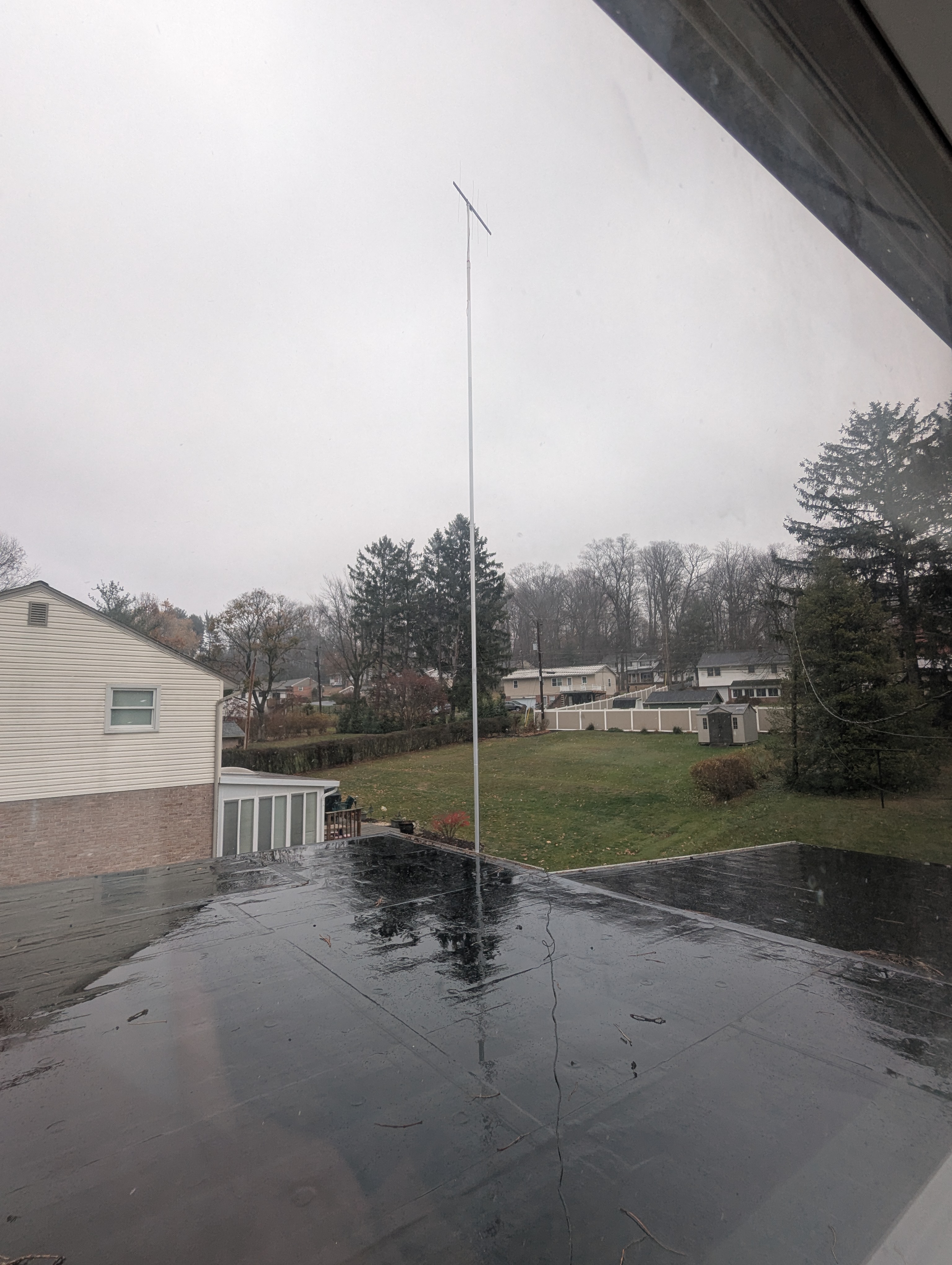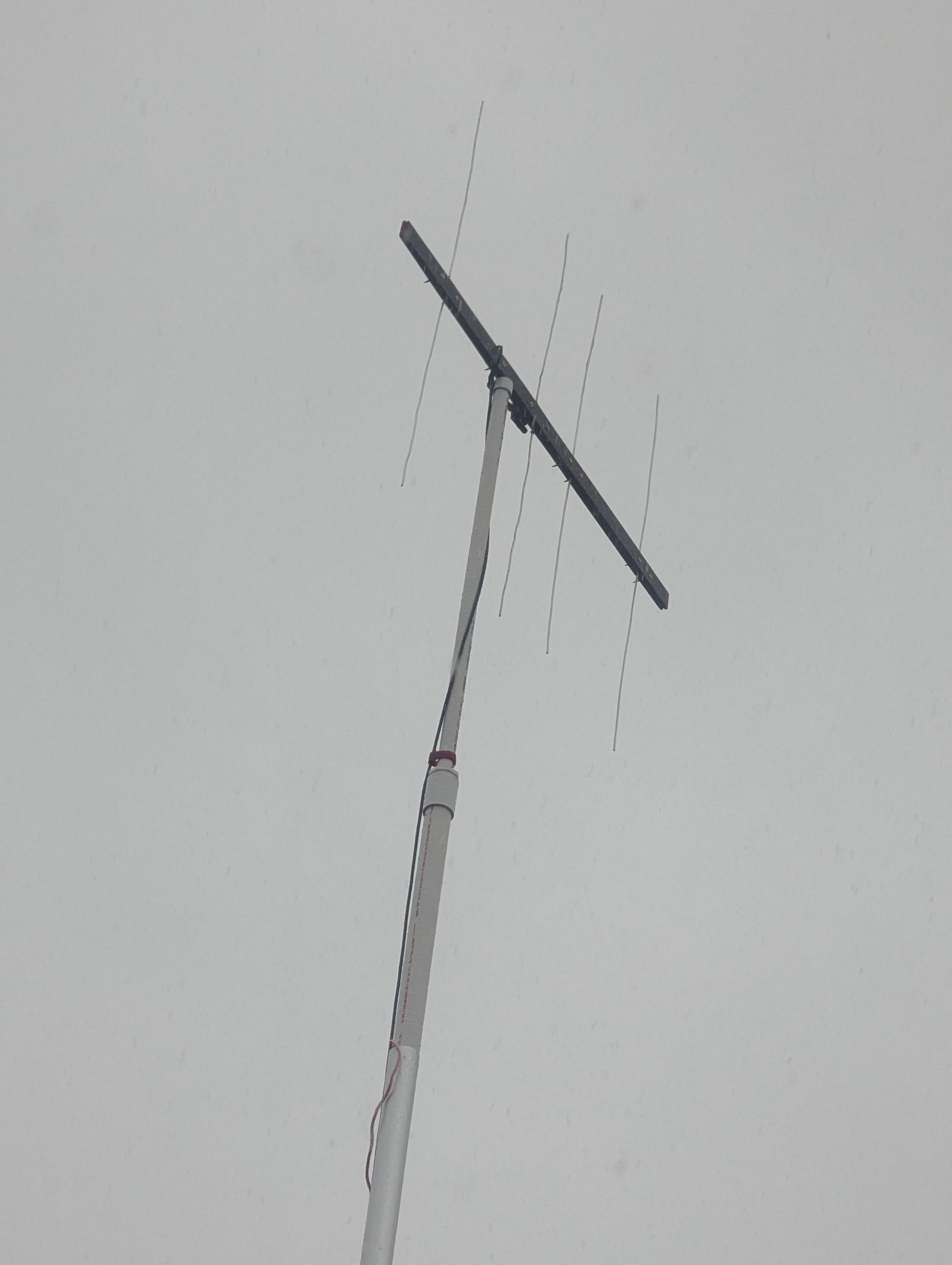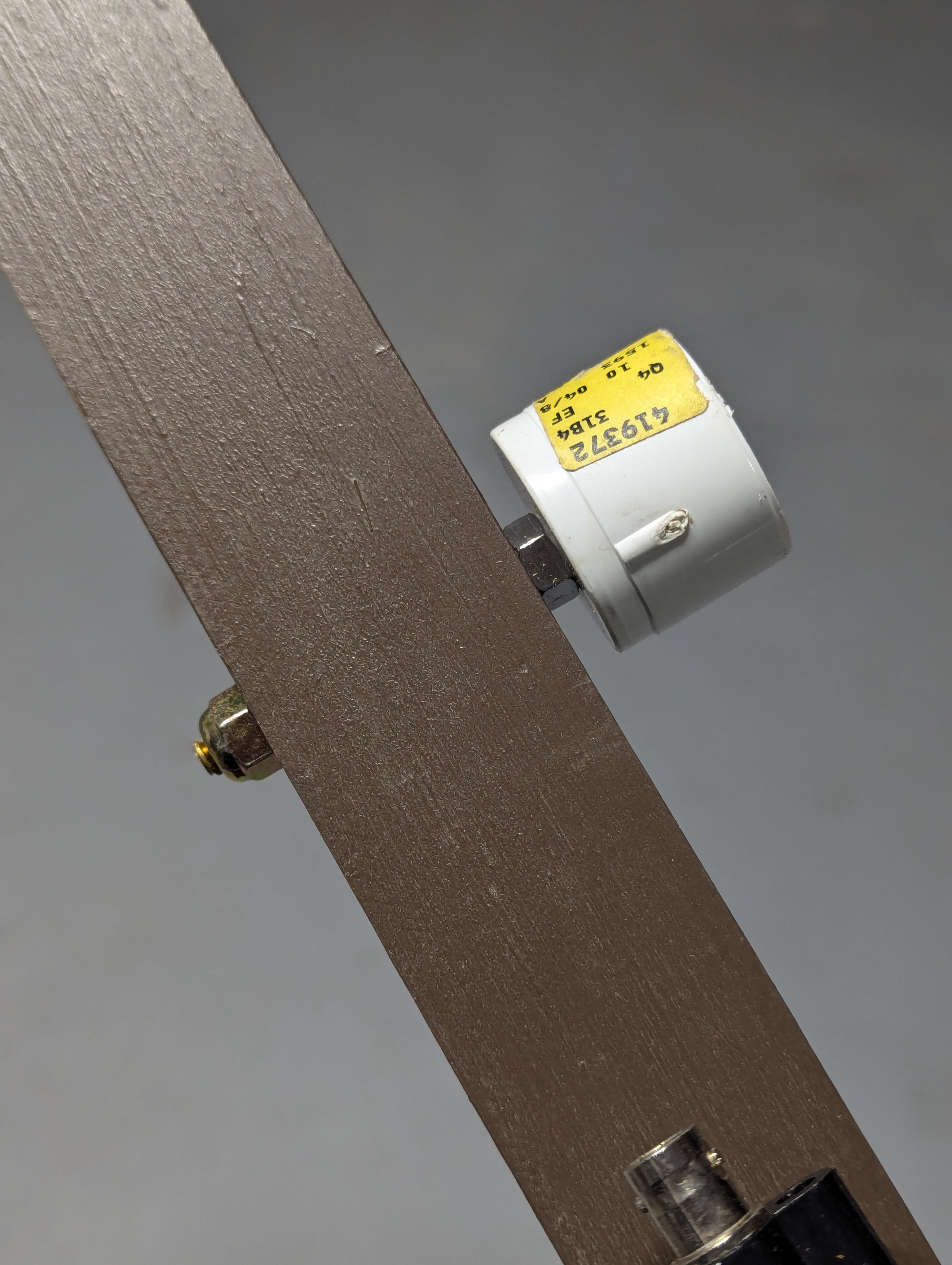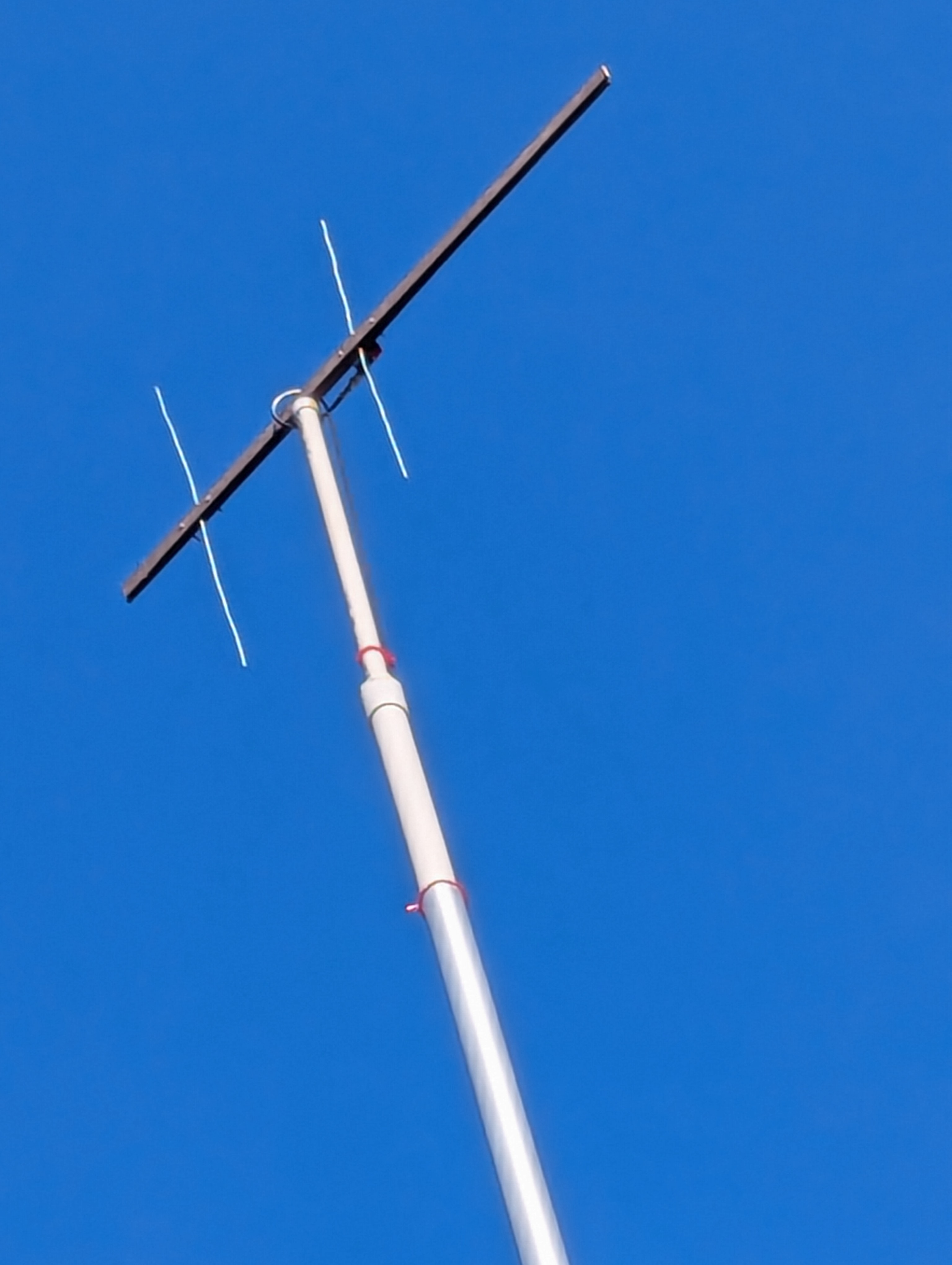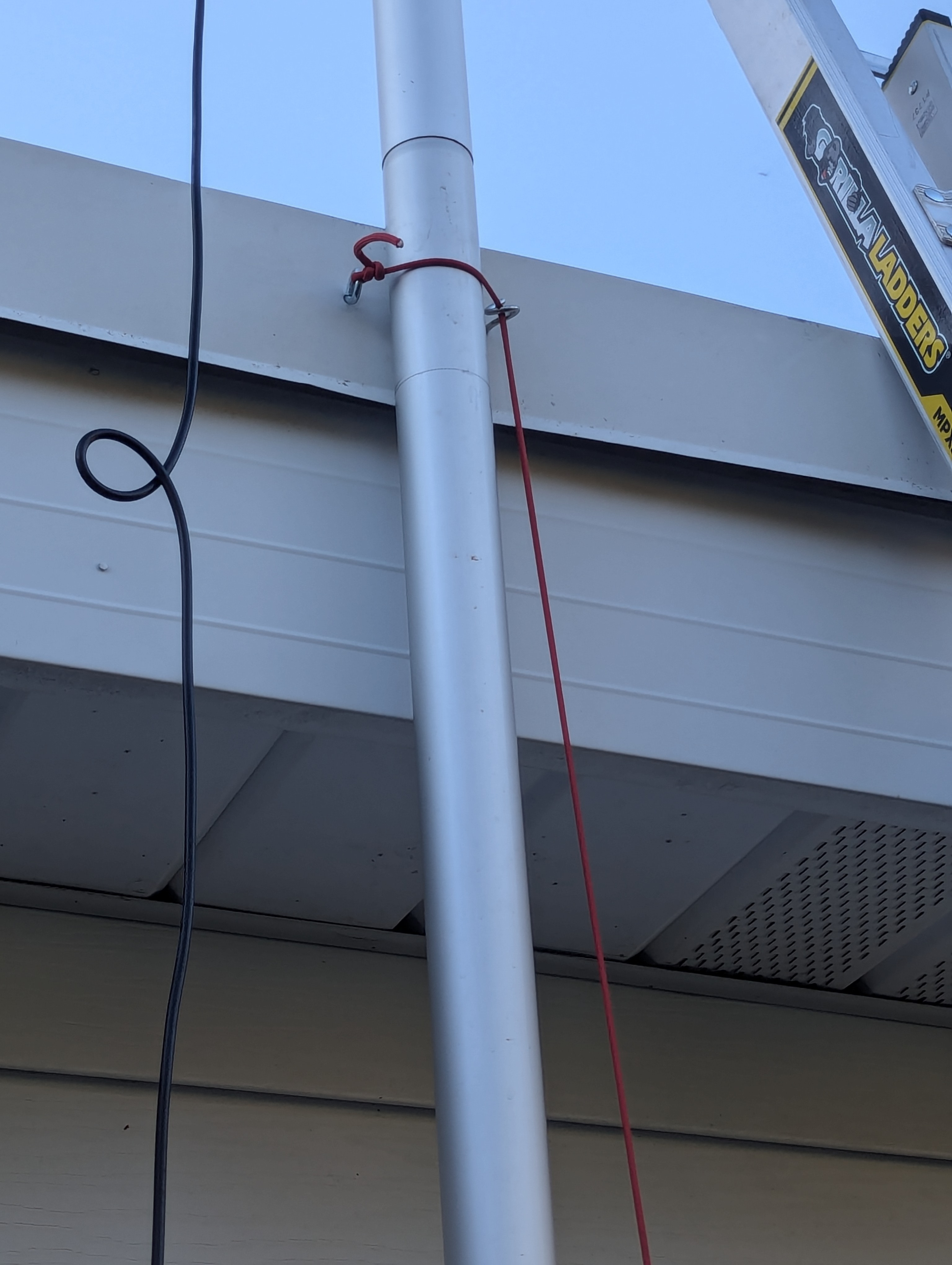Initial Tuning
The one-page document
that comes with the GRA-1900T antenna
detailing the jumper positions on the coil
and the lengths at which to set the whip for each band
didn’t seem to match up all that well,
which led to some frustration out in the field.
I decided to use my NanoVNA
to reconstruct my own instructions
for using the antenna.
I extended the whip fully
and recorded the resonant frequency
for each jumper position of the coil.
Knowing those frequencies,
I can set the jumper
and shorten the whip
until the SWR sweep
on my x6100 is happy.
The SWR graph on the x6100
can be misleading sometimes,
because it often shows a birdie dip
or 2 in the graph,
but now I’ll always know
that I’m to shorten the whip
to get where I need to be.
I’ll eventually apply labels
to the coil with these frequencies.
I took the GRA-1900T out to Susquehannock State Park
for a field test.
My plan to tune the antenna
worked well.
I set the jumper
for the frequency below my intended operating frequency
and shortened up the whip
until the x6100 showed a good SWR curve.
Easy!
Oops, Broken Fishing Pole Mast
Since I hadn’t used the fishing pole
at the park,
I forget I had it
and left it behind
when I packed up.
2 days later,
I returned to retrieve it.
Some kids had found it,
had trouble collapsing it,
dug in the dirt with it,
and broke a section.
I was able
to put it back together
with the remaining sections,
and I 3d-printed a new fork/loop
to make it useful for supporting wire.
